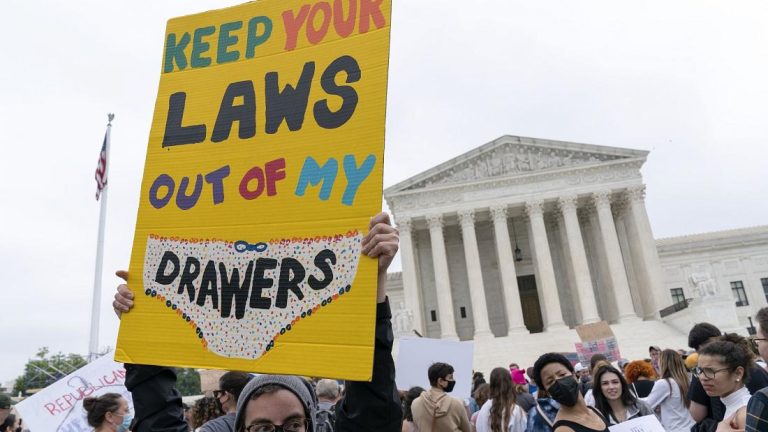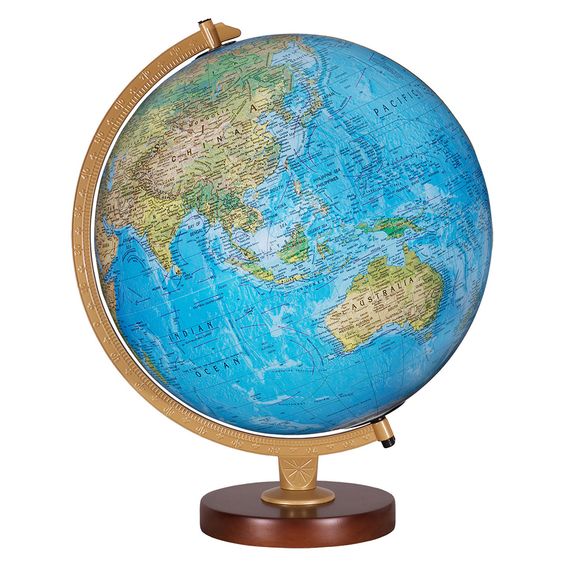
The alliance, however, may now be facing the downward slope. A poll taken just after the Supreme Court decision showed that 59 percent of Americans support abortion and 58 percent now want a federal law making abortion available nationwide.
By Tom Arms
The unholy alliance of the Christian Right and the Republican Party has conquered its Everest with the end of abortion in most of America.
It still has other political mountains to climb: Same-sex marriage, gay rights, equal rights, Christian nationalism, creationism, contraception, sex education, political correctness, gambling, pornography, Sunday trading…
But Roe v Wade was top target. It was the emotively totemic issue that united hardline conservative Republicans and Evangelicals and differentiated them from the rest of the country.
The alliance, however, may now be facing the downward slope. A poll taken just after the Supreme Court decision showed that 59 percent of Americans support abortion and 58 percent now want a federal law making abortion available nationwide.
The unholy alliance’s victory shows what religious fervor linked with political organization can achieve. But the majority has learned the hard lesson of complacency associated with defending the status quo. They have been galvanized, are removing the gloves and have electoral numbers on their side.
America has a long history of mixing politics and religion. New England was founded by religious dissidents who sought to breakaway from establishment Church of England and for a long time set up their own theocracy in America. The US constitution was seen as a triumph of rationalism, the summit of the Age of Reason and a victory over the religious superstition of the medieval world.
For about 100 years enlightened reasoning—with exceptions– reigned largely supreme within the American corridors of power. Then along came Darwin and the church split between the fundamentalists who dismissed evolution as heresy and those who reluctantly accepted it as the logical fruit of science.
The fundamentalists gradually grew in numbers, especially in the South where fundamentalism was linked with a biblical justification for segregation. Then along came the Scopes Monkey Trial in 1925. Creationists were humiliated by firebrand lawyer Clarence Darrow and slinked off to link their wounds.
By the time World War Two came along America was on the road to secularism with church attendance down to just 32 percent of the population. Then the Cold War started. First Harry Truman and then Dwight Eisenhower, encouraged “Christian” America to unite against the atheistic God-Hating Soviet Union. With government support, millionaire industrialist Charles Wilson established the Religion in American Life campaign in 1949 and church attendance soared so that by 1960 69 percent of Americans were attending Sunday services.
But Wilson’s campaign was not linked to any political party. In fact it was pan-political in that its main target—Moscow—was accepted by Democrats and Republicans alike. It was not until the civil rights movement and Richard Nixon that the Republicans started to exploit religion to establish a foothold in the Bible Belt southern states.
Segregation was the issue but the Republican leadership took a softly approach. “We don’t want to appear racist,” said Nixon.
When Roe v Wade came along in 1973 it was not a major issue with conservatives or the Christian right. In fact, Wallie Criswell, president of the Southern Baptist Convention from 1968-70, initially welcomed the Supreme Court decision. “I have always felt that only after a child was born and had a life separate from the mother than it became an individual person.”
Abortion did not become a conservative and religious issue until 1979 when Paul Weyrich and Jerry Falwell co-founded the Moral Majority and started to forge the steel links that bound evangelism and the Republican Party. Ronald Reagan was the first beneficiary of the alliance. The actor-turned-politician was himself not particularly religious, but he saw an opportunity and grabbed it with both hands. The embrace, however, was more symbolic than activist as the unholy alliance was in its infancy and he was keen not to offend non-evangelicals, although he did achieve a Supreme Court review of Roe v. Wade only to have it reaffirmed by a majority of one.
Clinton was a setback. Although by now, the collapse of the Soviet Union meant that the focus of the religious right had shifted from atheistic Moscow to secular humanists and the liberals who espoused it.
George W. Bush was a major victory. But after 9/11 Dubya’s focus was on enlisting the religious right in his fight against Islamic terrorism. Abortion was a secondary issue. The election of Barack Obama finalized the marriage of the Christian right and Republicans. White Supremacists were threatened by the election of a Black man and Obama’s unswerving support for abortion and gay rights secured the scorn of the evangelicals.
Trump was a lying, cheating, thrice-married, racist misogynist. He was described by one clergyman as a man who regarded the prohibitions in the Ten Commandments as his “personal to do list”. But that did not matter. He opposed abortion and represented evangelical’s deeply conservative values. “We are electing a commander-in-chief, not a pastor-in-chief,” said supporter Jerry Falwell Jr.
The Christian Right was mobilized like never before. They hit the streets to knock on doors and distribute Trump literature; phoned voters; held pro-Trump prayer meetings and public fasts. When polling day arrived 81 percent of America’s evangelicals cast their votes for Donald Trump. He owed his victory to the born again and Trump repaid the debt by appointing three Supreme Court Justices whom he knew would overturn Roe v. Wade.
But now it is done. The Christian Right is now the status quo and the angry liberal pro-abortion majority is attacking their walls. They have the numbers and now they have a cause. The mid-term elections for control of Congress were expected to be a walk over for the Republicans. The end of Roe v. Wade may have changed that and the outcome of the 2024 presidential election.
 World Review
World Review
- So we know that abortion is now, or is about to be illegal, in about half of the American states. But what about the rest of the world? And what affect is the Supreme Court decision having elsewhere? In Brazil at the moment abortions are allowed in cases of rape and incest. Populist right-wing president Jair Bolsonaro has used the overturning of Roe v Wade to call for a total ban. At the same time, other countries have condemned the ruling. British Prime Minister Boris Johnson called it a “major step backwards.” Almost simultaneous with the Supreme Court decision, Germany scrapped a Nazi-era law that bans doctors from offering information about abortion procedures. Spain took steps to remove parental consent for 16-17 year olds. French legislators proposed a bill to make abortion a constitutional right and the Dutch voted to abolish a mandatory five-day wait for women seeking an abortion. Within the EU only Malta has a total ban on abortion. Poland is the next strictest country on abortion laws. It allows pregnancy terminations in cases of rape, incest and when the mother’s life is threatened. Generally, abortion has become accepted as a woman’s right in all but 37 out of 195 countries in the world.
- The Ukraine War is sucking ammo dumps dry. The Russians are the worst hit. A tough Ukrainian defense has forced them to resort to blanket artillery barrages. They started with high precision missiles and by mid-May had fired off an estimated 2,200 of them. They are not cheap. Each cruise missile costs $1.9 million. They also take time to build and involve semi-conductors and transistors which are unavailable in Russia. Moscow’s now depleted precision munitions means that it is using more low precision artillery shells—about 20,000 a day– which increases the collateral damage. Tanks are another problem. The Ukrainians have been particularly adept at knocking out Russia’s tanks. So far the kill rate has topped a thousand. Each tank costs about $4 million and takes a minimum of three months to build. But the other side—Ukraine and its Western backers—is also having problems. Kyiv didn’t have much to start with and most of it was out of date Soviet-era Russian-produced weaponry. It now has to rely on NATO defense equipment which they do not know how to use. So they have to be trained which takes time. Britain has taken a key role in training Ukrainian troops. But NATO is also running short of weapons to send Ukraine, especially the Europeans who have been particularly generous. Poland for instance, has given a quarter of its tanks to the Ukrainian army. Britain has donated about a third of its highly-effective Starstreak anti-tank missile systems and Defence Secretary Ben Wallace is pleading the special case argument to increase defence spending to 2.5 percent of GDP. Germany, Sweden, Finland, Lithuania, Estonia and Latvia have seriously depleted their weapons stocks. One of the reasons that the NATO summit agreed to a near ten-fold increase in troop and weapons levels in the Baltic region is because the defense cupboards in that region are heading towards bare. US ammo dumps are also taking a hit. Ukrainians have made good use of American-made Javelin missiles. Seven thousands of them—roughly a third of the total US stock of Javelins—has been sent to Ukraine. The American armaments industry produces an estimated 1,500 Javelin missiles a year. But the US has other similar systems and the industrial capacity to expand production. In a war of attrition, the West is much better placed then Russia. The next question is: Does it have the political will?
- It was summit week. First the G7 and then NATO. The main topics were—surprise, surprise—Ukraine, Russia and China. Contrary to what the Russian press agency Novosti reported—both summits demonstrated that the Western Alliance is sticking together. In fact, at the G7 in Germany, British Prime Minister Boris Johnson and French President Emmanuel Macron ended six years of a private war to declare that Ukraine had brought them together for Europe’s latest bromance. The G7 had other highlights. One was challenging China’s Belt Road Initiative with a Biden sponsored $600 billion alternative to be called the Partnership for Global Infrastructure. The US will supply $200 billion; the EU $300 billion and the rest will come from Canada, the UK and Japan. The NATO summit in Spain was meant to set alliance strategy for the next ten years and it did just that. Russia was declared the immediate threat and 260,000 more troops were promised for the defense of Europe. Additional aid was pledged to Ukraine. Sweden and Finland joined the alliance and Turkey dropped its opposition to their membership in return for American f-16 jets and a Scandinavian promise to extradite Kurdish rebels to Turkey. But the biggest change was the Alliance declaring that China was a threat to democracies—albeit not as immediate as Russia. NATO was founded in 1949 to counter the danger of the Soviet Union and its activities were restricted by treaty to Europe and the North Atlantic. The war in Afghanistan was an aberration brought about by the Taliban’s refusal to hand over Osama bin Laden after 9/11. Madrid affirmed a global reach policy and underscored this dramatic change by inviting the leaders of South Korea, Japan, Australia and New Zealand to attend the summit as “observers.” The Chinese, however, are not happy. “NATO is extending its tentacles to Asia-Pacific,” said Beijing’s foreign ministry spokesperson Zhao Lijian, “in an attempt to export the Cold War mentality.”
- The Congressional Inquiry into the 6 January Capitol Hill riots has established that Donald Trump is almost certainly guilty of inciting the attack. Also that he sought to overturn legal electoral processes. He or his staff may even have colluded with the rioters. The problem for Attorney General Merrick Garland is that almost is not good enough in the eyes of the law. Any federal prosecutors will have to prove the guilt of Donald Trump beyond the shadow of a reasonable doubt, especially as he is a former president and likely candidate for the 2024 elections with a significant amount of national support. Not even this week’s explosive testimony from former White House aide Cassidy Hutchinson was enough to tip the scales of justice. It will have hurt Trump politically, but most of what Ms Hutchinson said was hearsay and thus inadmissible in a court of law. BUT, at the end of the Hutchinson testimony, Republican Congresswoman Liz Cheney dropped a legal bombshell that may yet put the elusive Trump in an orange onesie. The ex-president’s nemesis reported that two anonymous witnesses have come forward to say they were approached by Trump staff to say that the former president expected them to “do the right thing” in their testimony before the committee and to investigators. This is quite clearly witness tampering. It is highly illegal. Any Trump staffer who issued such a statement faces prison time. And if the order to make such a statement can be traced back to Donald Trump then he too is likely to spend time behind bars.
___________________
 Tom Arms is foreign editor of Liberal Democrat Voice and author of the recently-published book “America Made in Britain.”
Tom Arms is foreign editor of Liberal Democrat Voice and author of the recently-published book “America Made in Britain.”